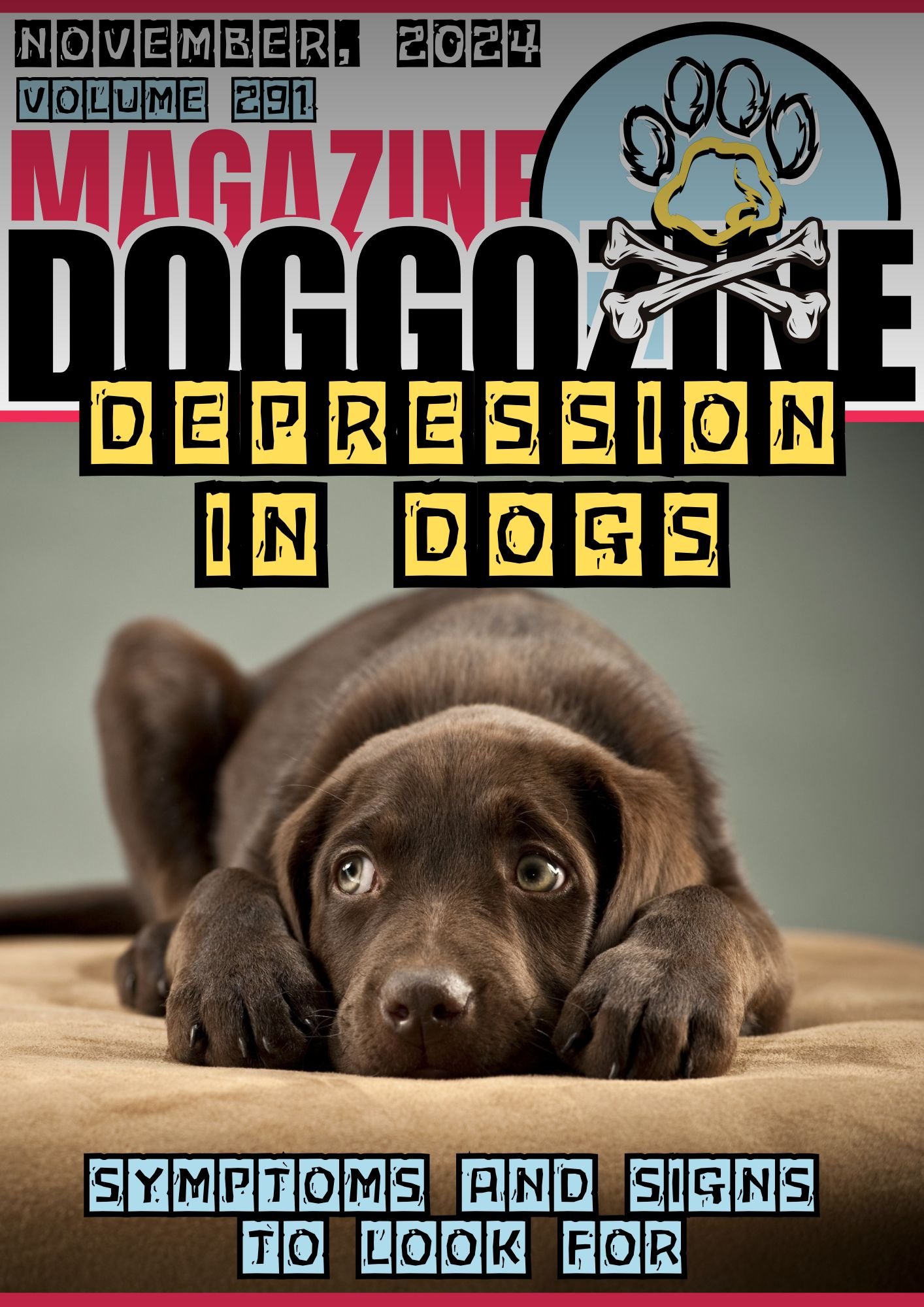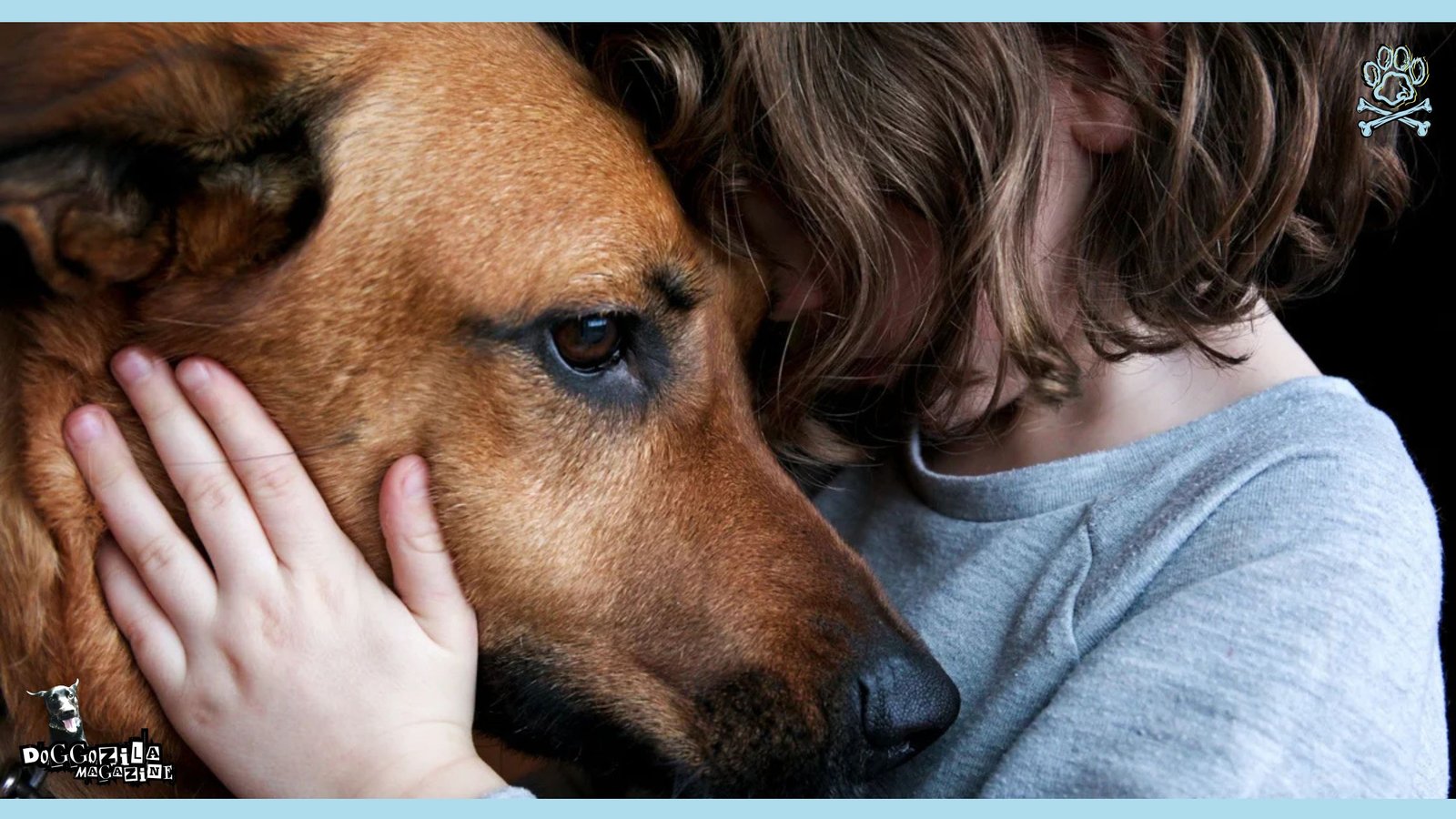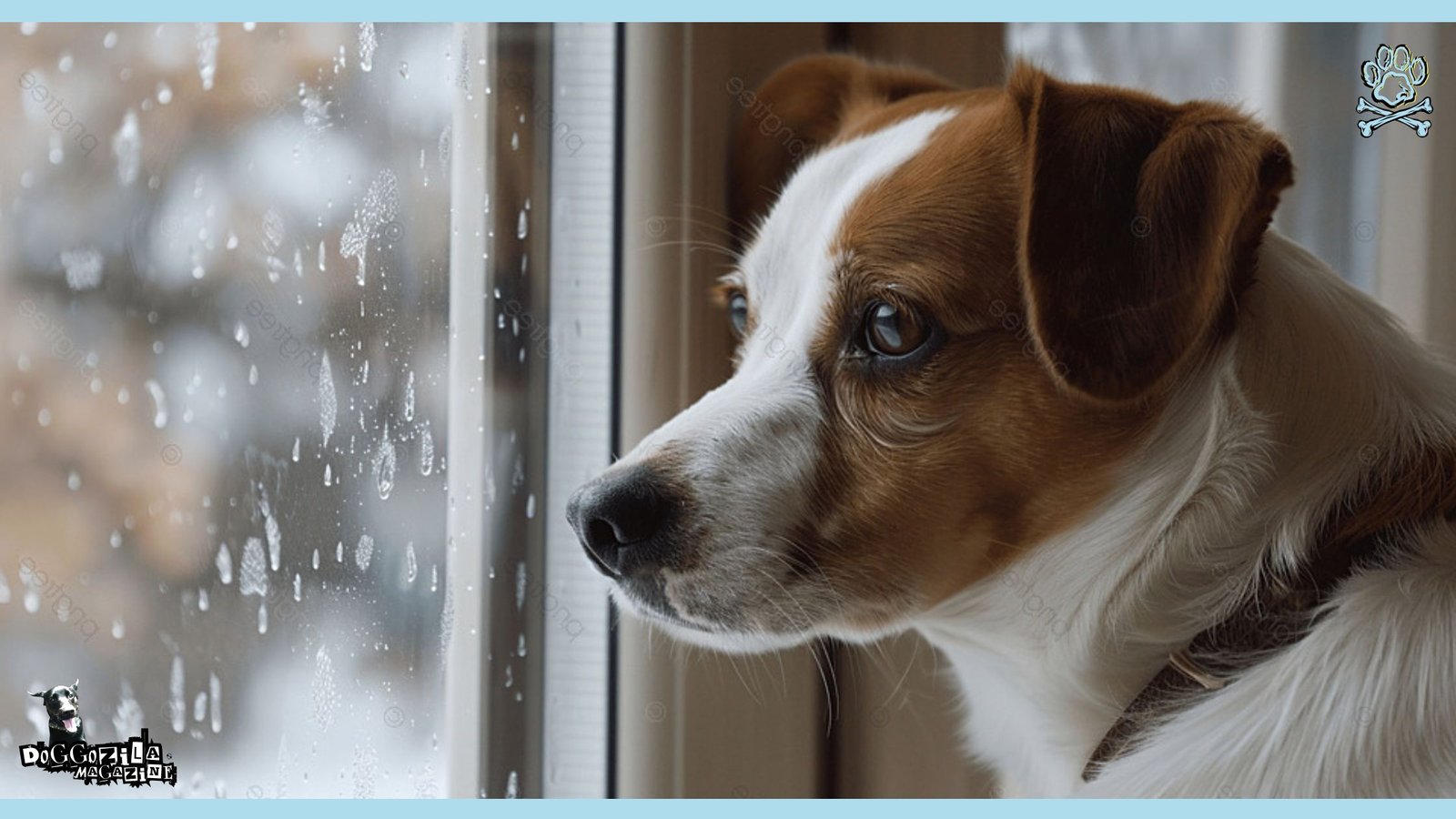Canine depression is a serious condition that affects many dogs, and it is essential for pet owners to recognize its signs. Depression in dogs can manifest in various ways, similar to how it does in humans. Factors such as changes in environment, loss of a companion, or illness can trigger depressive behaviors in our canine companions. This condition can lead to a decrease in a dog’s overall quality of life if left unchecked.

UNDERSTANDING DOG DEPRESSION
Understanding the symptoms of depression in dogs is vital for responsible pet ownership. Just as humans may experience feelings of sadness, lethargy, or withdrawal, dogs can exhibit similar behaviors when they are feeling down. These signs might include a lack of interest in activities they usually enjoy, changes in eating or sleeping patterns, and an overall decline in communication and social interaction with family members.
Observing and Understanding the Nuances of Dog Behavior
Recognizing these symptoms early on can significantly impact a dog’s recovery and well-being. Early intervention can lead to proper care, which may include behavioral modifications, enriching activities, or veterinary assistance. Just as we strive for mental health in ourselves, it is equally important to ensure the emotional well-being of our dogs.
By observing and understanding the nuances of dog behavior, we can address issues of depression effectively and provide the necessary support for our furry friends.
The relevance of dog depression cannot be understated. As we grow more aware of the emotional lives of pets, it becomes incredibly important to foster an environment that promotes their mental health. This comprehension not only helps in improving the mutual bond between dogs and their owners but also ensures that our pets lead happy and fulfilling lives.

COMMON SYMPTOMS OF DEPRESSION IN DOGS
Depression in dogs can present itself through a variety of symptoms that can deeply affect their overall well-being. One of the most noticeable signs is a marked decrease in activity levels. A previously energetic dog may become lethargic, showing little interest in going for walks or playing fetch. Owners might notice their pet spending extended periods lying down, even in the presence of stimuli that would typically excite them. This current of inactivity can be an alarming signal of a dog’s emotional distress.
Signs of Depression in Dogs
Another common indicator of canine depression is a loss of interest in activities that previously brought joy. For instance, a dog that once eagerly anticipated bath time or car rides may suddenly act disinterested or reluctant. Similarly, social interactions might diminish; a dog who used to greet family members with enthusiasm may now shy away from affection and contact, signaling emotional withdrawal and disconnection from its familiar environment.
Changes in appetite and eating habits also serve as critical indicators of depression in dogs. A depressed dog may start refusing food or overeating as a means of coping with their emotional state. Alterations in appetite can lead to noticeable weight fluctuations, which can have detrimental effects on their health. Furthermore, changes in sleeping patterns can be another symptom to monitor. Some dogs might begin sleeping excessively, while others may appear restless, unable to settle down comfortably.
Recognizing The Symptoms of Depression in Dogs Is Essential for Early Intervention
Keeping a close watch on these behavioral nuances can significantly assist dog owners as they evaluate the emotional health of their furry companions. Recognizing these common symptoms of depression in dogs is essential for early intervention.
Understanding these signs can help pet owners maintain a better quality of life for their dogs, ensuring they receive the support they need. By remaining attentive to these changes, owners can take steps toward improving their dog’s emotional well-being.
🔑 Key Points: Understanding the symptoms of depression in dogs is vital for responsible pet ownership. Recognizing the symptoms early on can significantly impact a dog’s recovery and well-being. Be aware of the signs of depression!

BEHAVIORAL CHANGES IN DEPRESSED DOGS
Understanding the behavioral changes exhibited by dogs is crucial for identifying signs of depression. Just like humans, dogs can experience emotional turmoil that affects their demeanor and actions. One of the most notable indicators of depression in dogs is increased aggression. This aggression can sometimes manifest as growling, snapping, or even biting, often seen in dogs that are typically well-nurtured. Such shifts in behavior may indicate that the dog is experiencing distress or discomfort, warranting immediate attention.
Dogs Talk Through Sounds
Vocalizations such as howling and whining may also serve as strong signals of a dog’s emotional state. A dog that begins to howl more frequently than usual or whines during moments of solitude might be expressing feelings of loneliness or sadness. Animals are known to communicate their feelings through sounds, and a noticeable increase in such vocalizations should not be ignored. These signs could indicate that the dog is struggling to cope with changes in their environment or routine.
Another aspect to consider is withdrawal from social interactions. A previously social dog that suddenly seeks solitude, avoiding playtime or interaction with family members, could be displaying signs of depression. This behavioral change often reflects an underlying issue—be it a recent loss, a change in household dynamics, or even health problems. Dogs are social creatures, and a lack of engagement can be a significant signal that they are not coping well emotionally.
Recognizing these behavioral changes as potential indicators of depression can lead to timely intervention, which is essential for improving a dog’s quality of life. Observing the overall demeanor of a pet is vital, as these changes may point towards an emotional or physical concern that requires professional evaluation.
The Impact of Depression on a Dog’s Health
Depression in dogs is a serious condition that can significantly affect their overall health and well-being. Recognizing the signs of depression is crucial for pet owners, as early intervention can prevent long-term health implications. One of the primary physical manifestations of depression in dogs is noticeable weight changes.
A depressed dog may lose interest in food, leading to weight loss, or conversely, exhibit increased appetite as a result of boredom or anxiety, resulting in weight gain. This fluctuation in weight can exacerbate underlying health issues and lead to obesity, which presents additional risks, such as diabetes and joint problems.
Moreover, depression can compromise a dog’s immune response, making them more susceptible to infections and illnesses. A lack of engagement in physical activities can weaken their immune system, leaving them vulnerable to common ailments.
Recognizing The Impact of Depression in Dogs
An unmotivated dog may not be inclined to participate in regular walks or playtime, resulting in an overall decline in physical condition. Failure to address these behavioral changes can have a ripple effect, ultimately impacting the dog’s quality of life and its ability to cope with everyday stressors.
Long-term effects of untreated depression in dogs can be quite severe. Chronic stress related to depression can lead to increased tension and anxiety, further complicating a dog’s mental and physical health. If left unaddressed, this can contribute to the development of serious conditions such as gastrointestinal problems or cardiovascular issues, posing a significant risk to their health.
Therefore, pet owners must remain vigilant and proactive in monitoring their dog’s behavior and well-being. Recognizing the profound impact of depression on a dog’s health underscores the importance of seeking professional help when necessary to ensure their mental and physical vitality.
🔑 Key Points: One of the most notable indicators of depression in dogs is increased aggression. A dog that begins to howl more frequently than usual or whines during moments of solitude might be expressing feelings of loneliness or sadness. An unmotivated dog may not be inclined to participate in regular walks or playtime, resulting in an overall decline in physical condition.

IDENTIFYING TRIGGERS FOR DOG DEPRESSION
Understanding the factors that contribute to depression in dogs is essential for effective management and prevention. Various triggers can lead to alterations in a dog’s behavior and overall demeanor, prompting signs of depression that may require immediate attention.
Factors That Lead to Depression in Dogs
One significant factor is changes within the household. Dogs thrive on routine and stability; therefore, any alterations, such as a new family member, a move to a different home, or significant lifestyle changes, can disrupt their sense of security, potentially leading to feelings of sadness or anxiety.
Another prevalent trigger for dog depression is the loss of a companion. This could be due to the passing of another pet, or even changes in human relationships, such as a family member moving away. Dogs often form strong bonds with their companions, and the absence of these familiar figures can result in profound emotional distress. Recognizing this form of grief in dogs can help owners provide the necessary support during such difficult times.
Boredom And Disinterest Lead to Depression in Dogs
Lack of exercise is also a critical factor contributing to depression in dogs. Physical activity is not just vital for a dog’s physical well-being, but it also plays a significant role in mental health. A lack of regular walks, playtime, and interaction can result in a buildup of energy and frustration, leading to behavioral changes that resemble depressive symptoms.
Additionally, boredom from insufficient stimulation can further exacerbate feelings of sadness and disinterest. Dog owners should prioritize both mental and physical engagement by incorporating varied activities and enrichment into their pet’s daily routine.
By identifying these triggers – household changes, loss of companions, and insufficient exercise – pet owners can better understand their dogs’ emotional needs. This awareness serves as an essential foundation for addressing and preventing depression in dogs, ensuring they lead happy and fulfilled lives.
🔑 Key Points: Understanding the factors that contribute to depression in dogs is essential for effective management and prevention.

HOW TO SUPPORT A DEPRESSED DOG
Supporting a depressed dog requires patience, understanding, and a proactive approach to enhancing their overall well-being. As a dog owner, recognizing the signs of depression is the first step, but addressing it effectively is crucial for recovery.
Consistent Routines and Socialization as Sense of Security
One of the most effective methods is to implement lifestyle changes that cater to your pet’s specific needs. Begin by establishing a consistent routine which can provide a sense of security. Regular feeding, walking, and playtime schedules can create stability in their lives, helping them feel more comfortable and less anxious.
Additionally, increasing socialization opportunities can greatly benefit a depressed dog. Dogs are inherently social animals, and interaction with other pets and people can uplift their spirits. Consider arranging play-dates with familiar canine friends or taking your dog to dog parks where they can engage and socialize with other dogs.
However, it is essential to monitor your dog’s behavior during these interactions to avoid overwhelming them. Gradually introducing new social situations can help restore their confidence.
Engage Your Dog in Activities and Provide More Mental Stimulation
Another important aspect is enriching the dog’s environment. Providing mental stimulation through toys, puzzles, and games can help divert their attention from negative feelings. Engaging your dog in activities that they once enjoyed, such as fetch or agility training, can also reignite their interest in play, making them feel more vibrant and connected.
Finally, consulting with a veterinarian is critical if you observe persistent symptoms of depression in your dog. A professional can rule out any underlying medical conditions that may contribute to the behavior and may also recommend behavioral therapy or medication if necessary. By taking these steps, you can effectively support your depressed dog and guide them towards recovery.

The Importance of Early Intervention
Recognizing the symptoms of depression in dogs is crucial for ensuring their overall well-being and quality of life. Early intervention can significantly improve a dog’s emotional state and prevent the progression of more severe behavioral issues. Dog owners play an essential role in monitoring their pets’ behavior, as they are often the first to notice any changes that may indicate depression.
Signs such as lethargy, loss of interest in activities, and alterations in eating habits should serve as red flags that prompt further investigation. Understanding that a dog’s mental health is as important as its physical health is fundamental for pet owners.
Delaying intervention can lead to more complicated issues, including anxiety, aggression, or deteriorating relationships with family members. Taking proactive steps—like consulting with a veterinarian or an animal behaviorist—can lead to effective management strategies tailored to the specific needs of the dog.
Most Important Advice – be Close with Your Furry Friend and Cherish the Bond You Have
These strategies may include changes to the dog’s environment, increased exercise, or incorporating enriching activities that stimulate mental engagement. Moreover, fostering a close bond with a dog and remaining attuned to its emotional cues can help prevent depressive episodes from occurring. Encouraging socialization and providing a structured routine contributes positively to a dog’s mental health.
Ultimately, being vigilant and responsive to signs of depression promotes not only a happier and healthier life for dogs but also strengthens the bond between the pet and its owner. Taking action promptly when symptoms are observed is not just beneficial—it’s essential for the overall happiness and well-being of our canine companions.
🔑 Key Points: Supporting a depressed dog requires patience, understanding, and a proactive approach to enhancing their overall well-being. Recognizing the symptoms of depression in dogs is crucial for ensuring their overall well-being and quality of life. Delaying intervention can lead to more complicated issues, including anxiety, aggression, or deteriorating relationships with family members.

WHY VIGILANCE MATTERS: A GUIDE FOR DOG OWNERS
Being vigilant about your dog’s mental health is crucial. Dogs are incredibly attuned to their owners’ emotions, and when they sense stress or sadness in us, it can have an impact on their well-being. Noticing subtle shifts in your dog’s behavior not only allows for early intervention but also strengthens the bond between you and your furry friend. Whether it’s a new routine, changes at home, or even a shift in your own mood, these can all affect your dog’s happiness.
Be a Friend to Help Your Dog Overcome Depression
If you suspect your dog is feeling down, there are several steps you can take to help lift their spirits. Start by introducing new activities like daily walks or playtime that encourage interaction and stimulate their mind. Engaging your dog in some fun games, like fetch or hide and seek, can also help relieve their blues.
Furthermore, consider spending more quality time together, as this can reassure your pet of your love and support. Additionally, creating a stable environment is key. Dogs thrive on routine, so keep feeding and walking times consistent. If the depression persists, it’s wise to consult with a veterinarian.
They can provide advice tailored to your pet’s specific needs and may recommend behavioral therapy or medication if necessary. Ultimately, being responsive to the signs of depression in dogs not only promotes a happier and healthier life for your pet, but it also nurtures your relationship with them.

Dogs are more than just pets; they’re part of the family. Taking the time to understand their emotional health is essential for their well-being and your overall family happiness.









